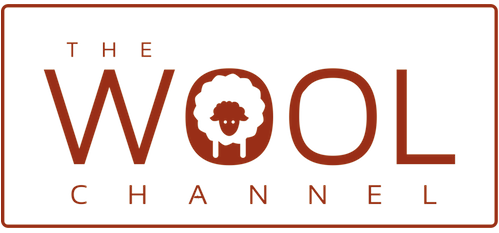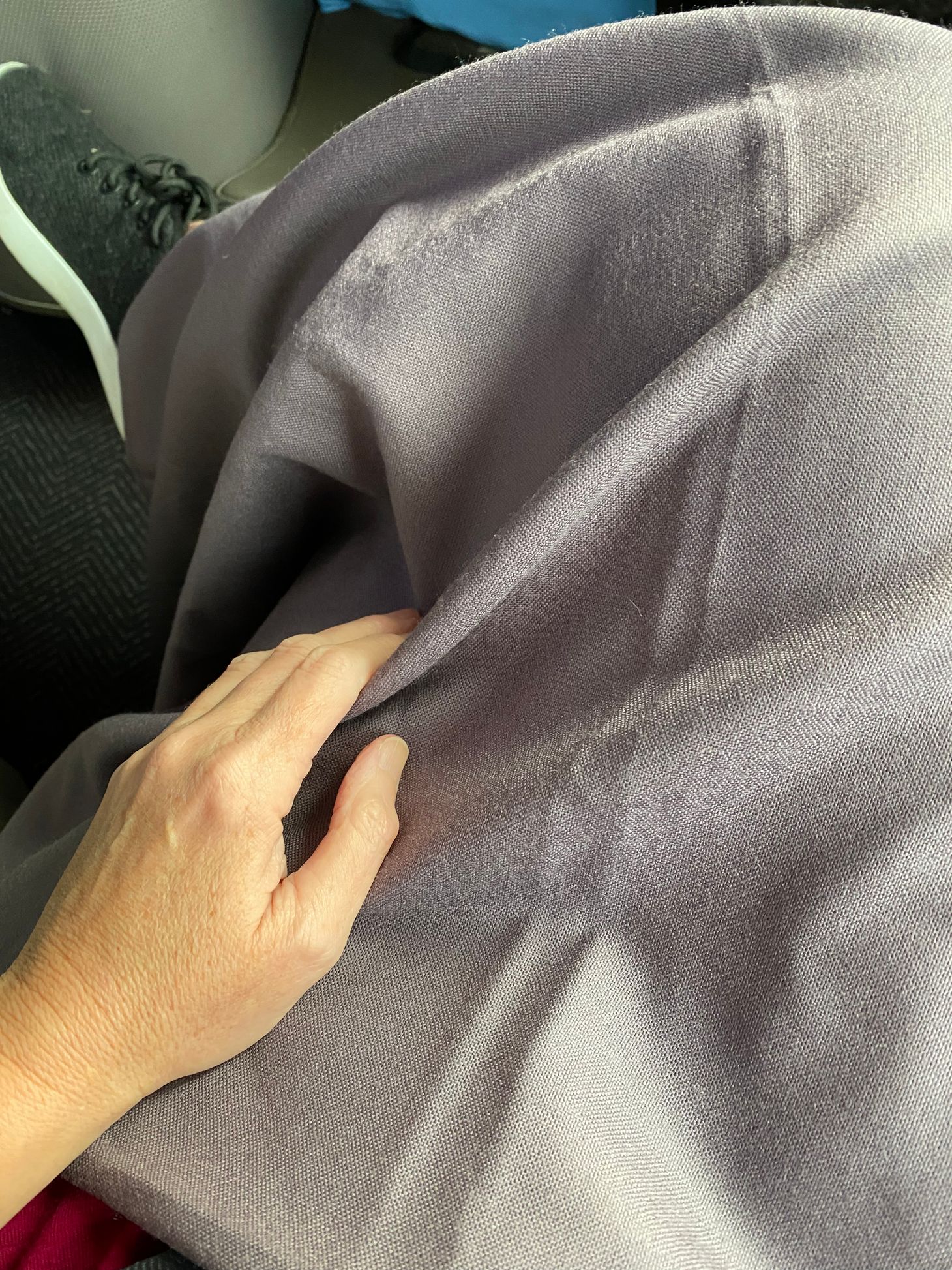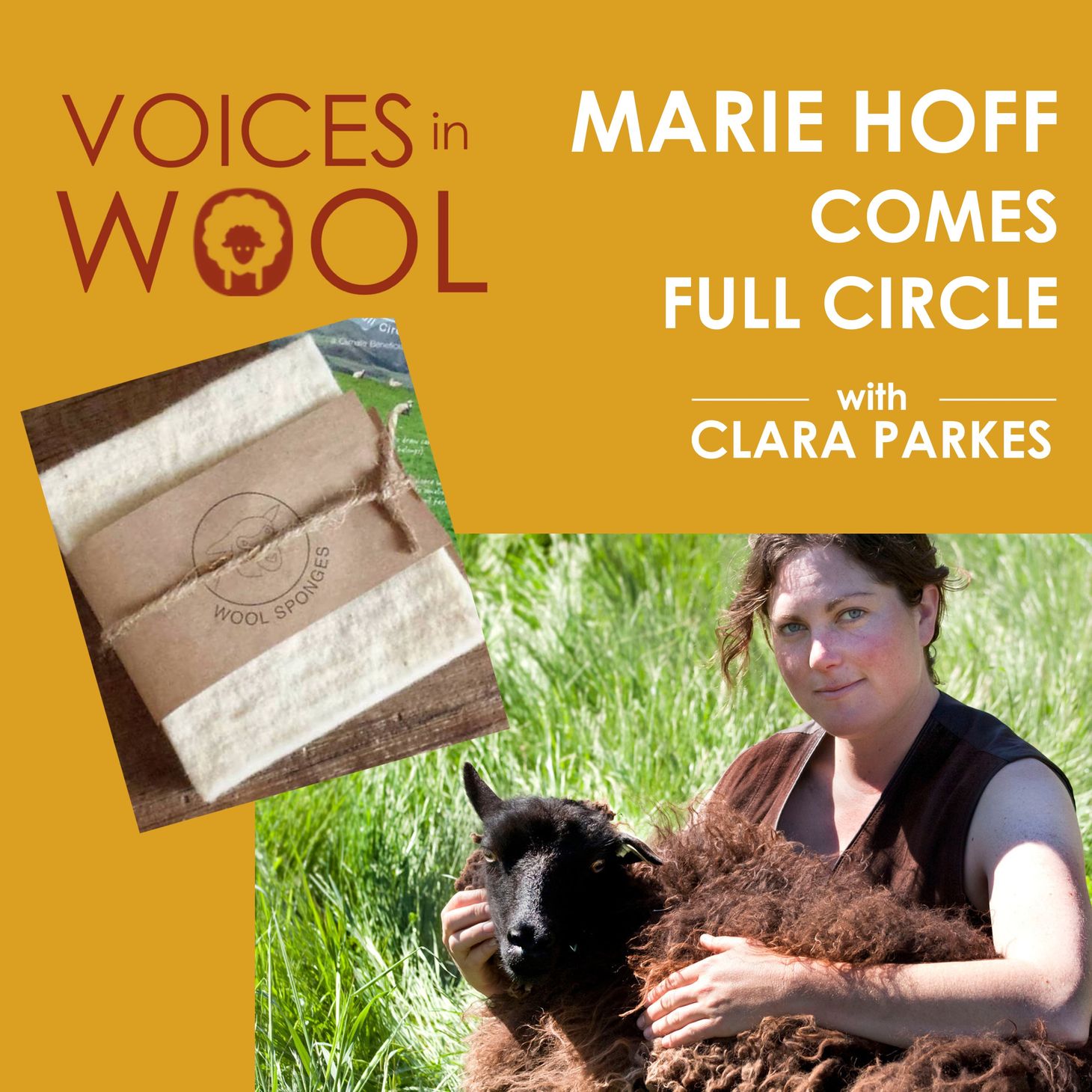Wet Wool and Dirty Dishes: Meet Your New Sponge
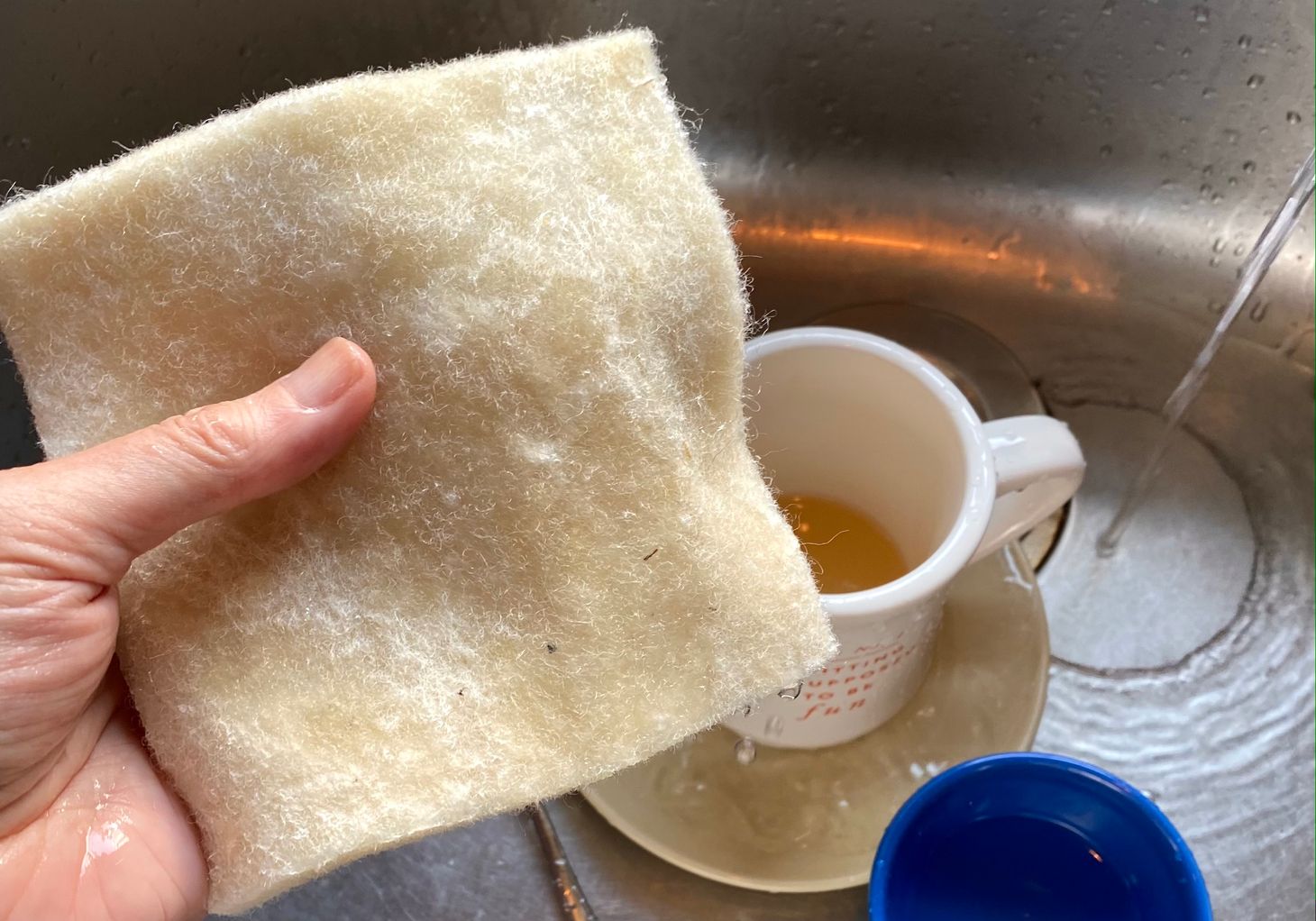
Most of us have spent a lifetime training ourselves to keep our woolens as far away from food (or dishes containing food) as possible. But today I am going to suggest that you do quite the opposite. I'm going to introduce a form of wool that actually wants to go into your dirty coffee cup and scrub it squeaky clean.
I'm talking about wool sponges. The term "wool sponge" has long been used in the bath and beauty industry to refer to a kind of natural sponge (Hippospongia canaliculata) harvested from the sea. Sometimes they're also called sea wool sponges, although they don't contain any actual wool.
Not to be confused with the new polyester concoction called SeaWool, which also contains zero actual wool. That's made from bleached, pulverized oyster shells that are mixed with melted recycled PET plastic bottles and then regenerated into a spinnable textile fiber that's being billed as an eco-friendly antibacterial wool alternative. Wool doesn't need an anti-bacterial eco-friendly alternative. That's what it is already. Really, SeaWool appears to be nothing more than polyester mixed with some chalk. Mmm, cozy.
Anyway, no. What we're talking about here is exactly what it sounds like: a sponge made out of wool.

The Full Story from Full Circle
The Full Circle Wool sponges are the brainchild of Marie Hoff, who rents out her flock of ouessant sheep to perform targeted grazing for vineyards and other land owners in Sonoma County, California.
🐑 Foundation Flockers: Check your inbox in 10 minutes for a Full Circle Wool discount code for 20% off storewide through the end of this year, excluding books and cards. If for any reason your email gets eaten by spam filters, simply log into The Wool Channel to get it. Thank you for this, Marie! 🐑
Marie became involved in Fibershed and met other ranchers who were Fibershed-certified and producing Climate-Beneficial wool. She saw that the wool was there, but the market for it wasn't. And since nobody else was in a position to step into the void, she did.
Marie bought a big batch of wool and got cracking. She also began selling other Fibershed producers' products at a booth she'd set up at a farmer's market--including felted placemats. One day, while staring at the grungy yellow sponge by her sink, she had an epiphany. What if she cut up one of the placemats and used it as a sponge instead?
After some trial and error, she settled on a thickness and shape that worked best as a dish sponge. Immediately, sales took off.
You'll hear more from Marie next week in a new episode of our podcast, Voices in Wool. Her story is a good one—not just about sponges but about her perspective on how targeted grazing can restore land, reduce flammable brush, and prevent wildfires. In the meantime, here's the 411 on the wool sponges.



They come in packs of two, in shades from white to grey and brown. They're about as thick as a plain sponge, about half as thick as the standard yellow ones with the green plastic scrubby sides (what I normally use). The color is as it came off the sheep, with some slight variation. The wool hasn't been carbonized, so you'll find little flecks of the farm still in the fiber.
The square shape seemed a tad too big, but I heeded the instructions ("Do not cut this! It shrinks!"). It does shrink. Not dramatically, but enough to turn a slightly diaphanous sheet of felt into a plush, pleasantly firm fabric for cleaning things.

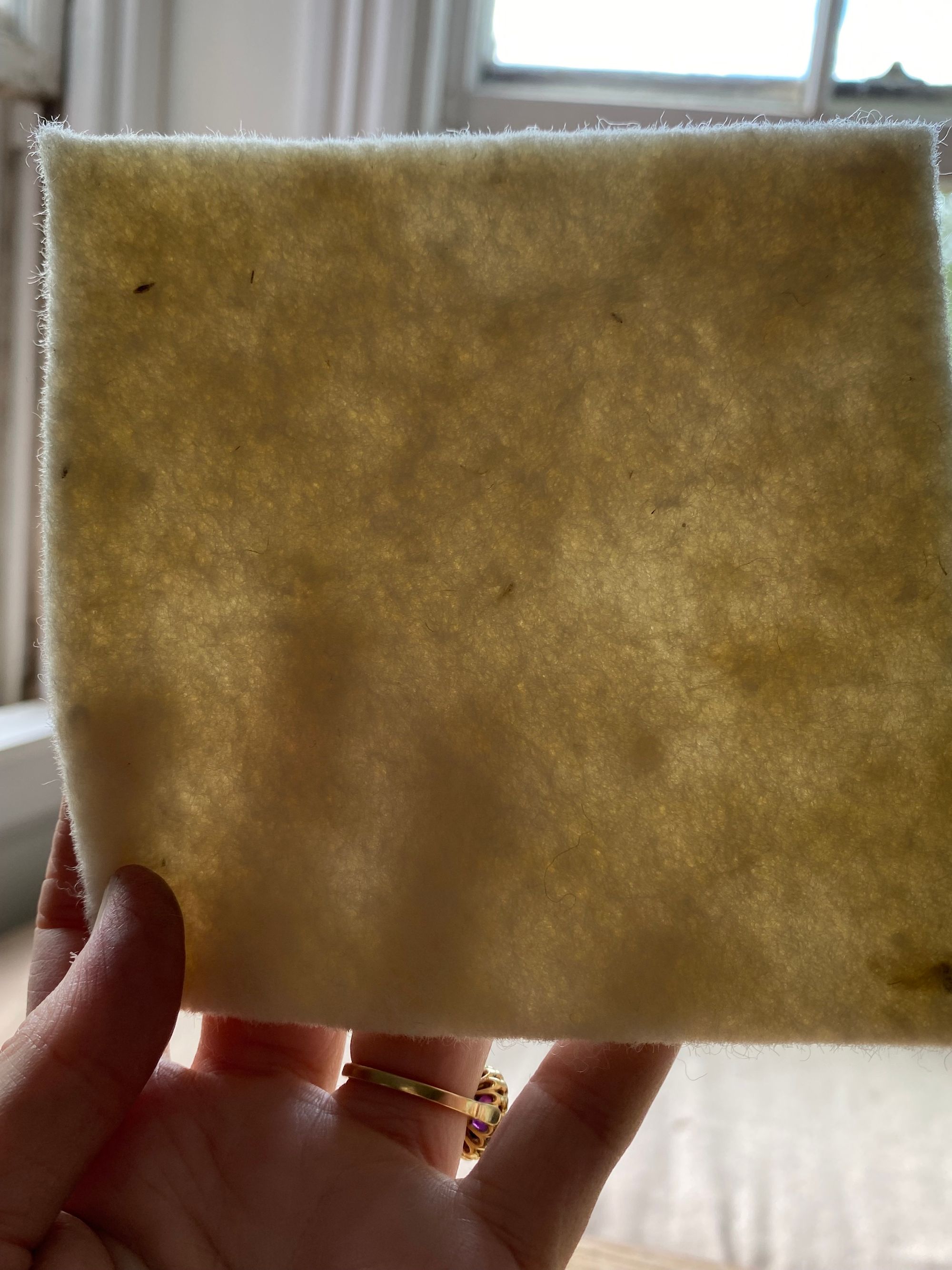
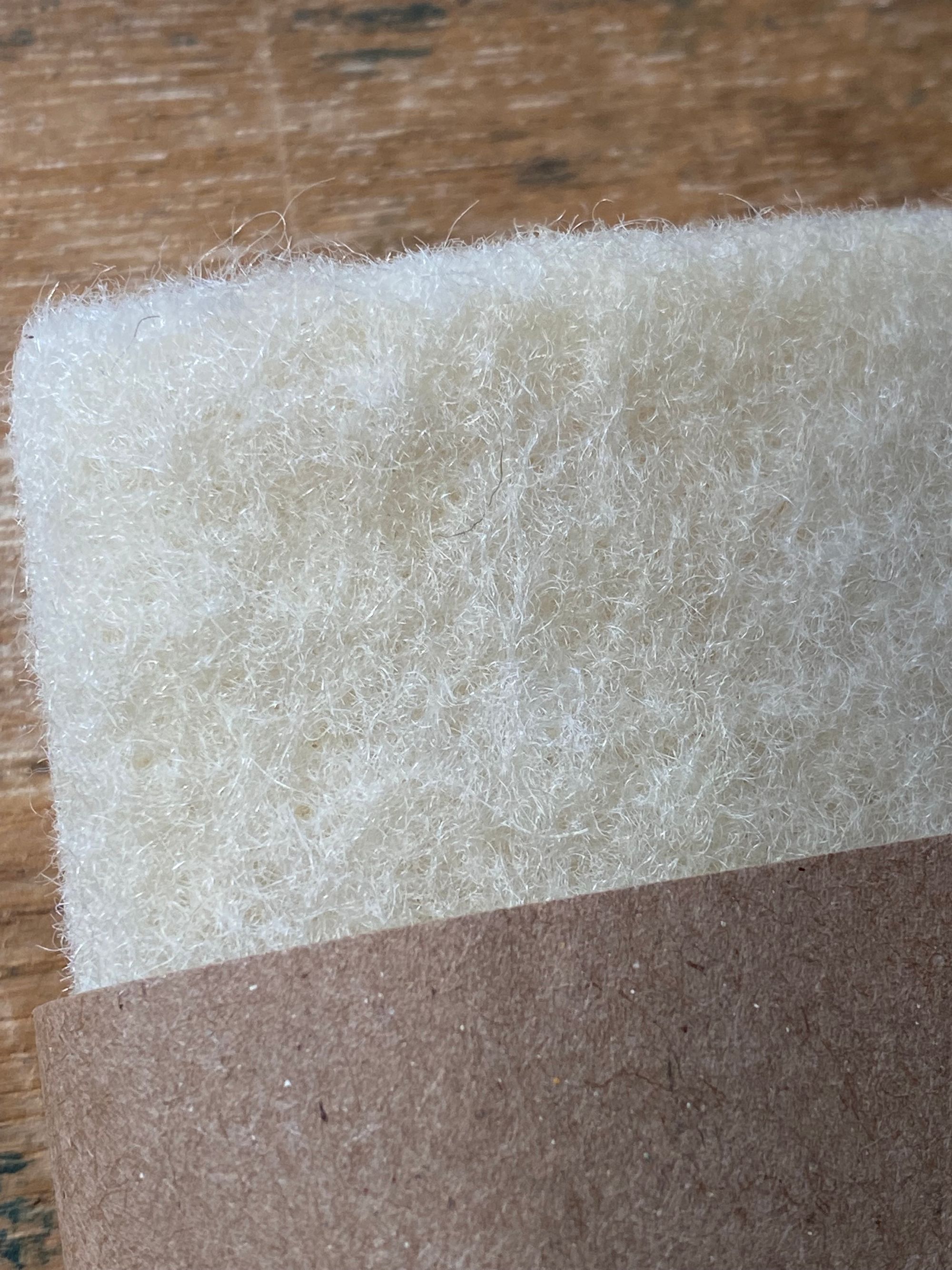
I got the original natural wool sponges, which retail for $9.95 for a set of two. (I paid retail on the Full Circle website.) The wool in these sponges was sourced from Ferndale Farms in Ferndale, California (Instagram @humboldtherder). You can also get a face and body combo, sized 5 and 7 inches square.
Wool in Motion
After some hesitation (it's wool! wool is pretty! we don't scrub dirty things with pretty wool!) I finally plunged my sponge in water, sudsed it up, and used it to wash some easy morning dishes. (That's an older Modern Daily Knitting mug, by the way. Thanks Ann and Kay!)

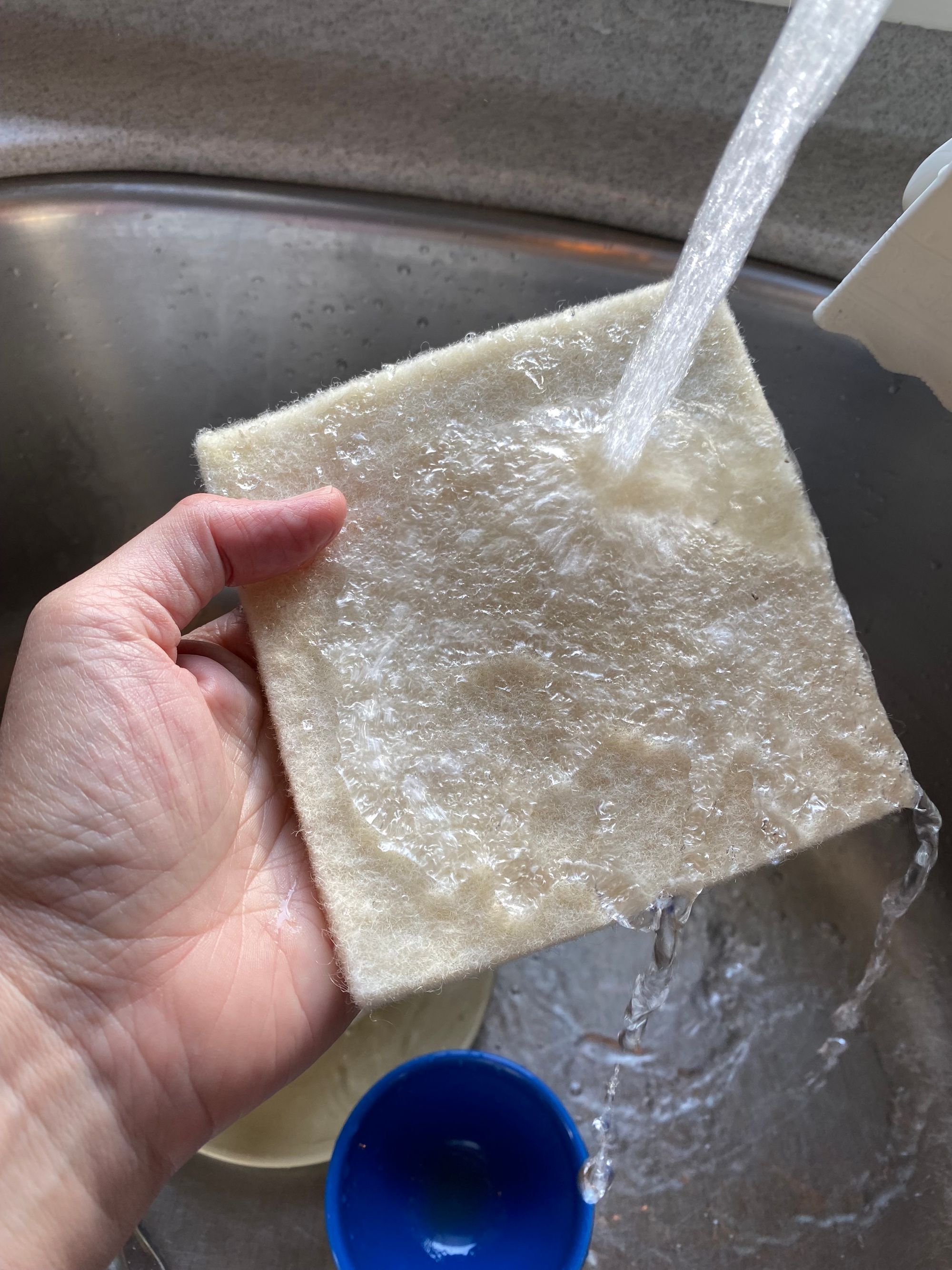
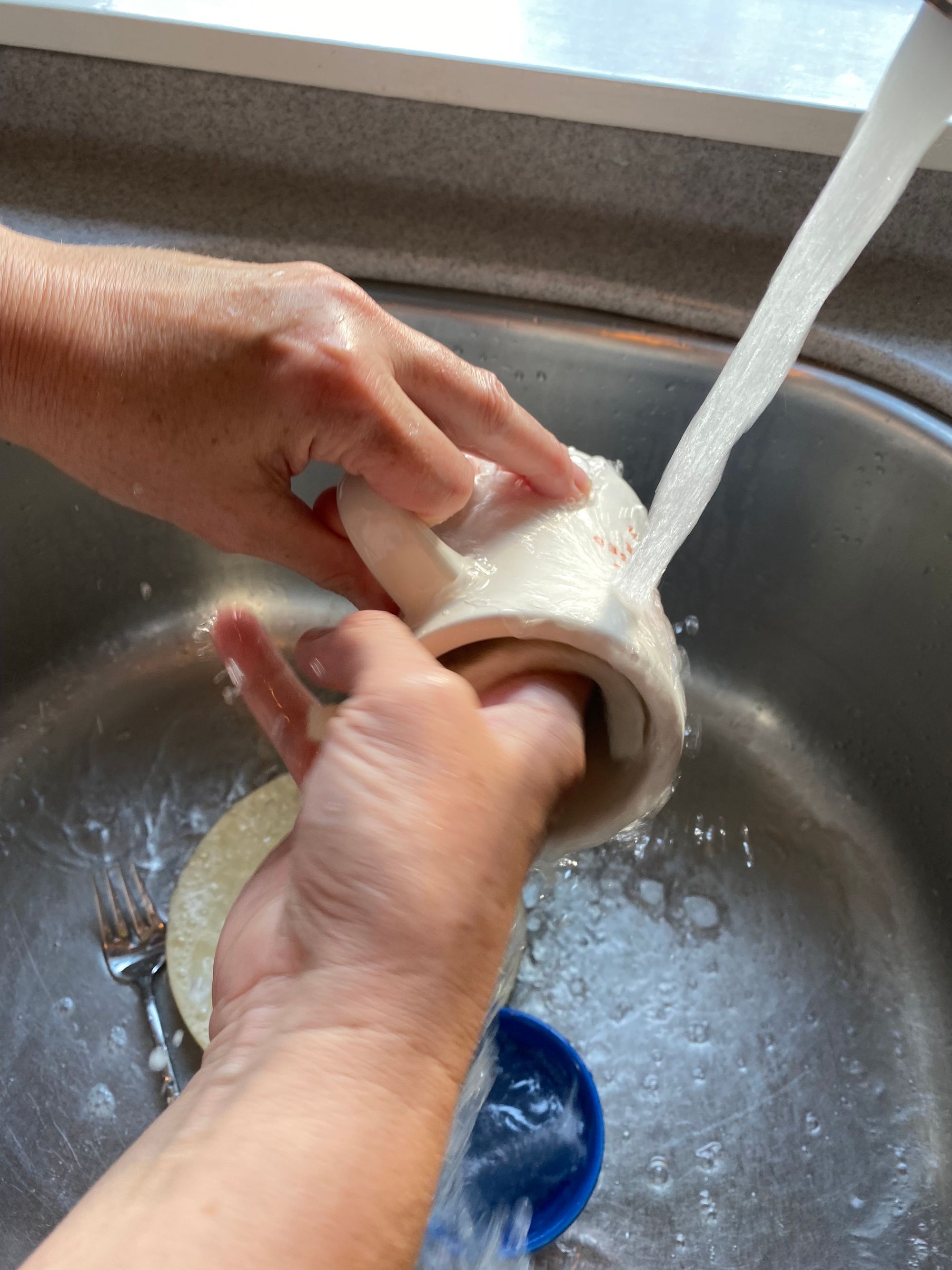


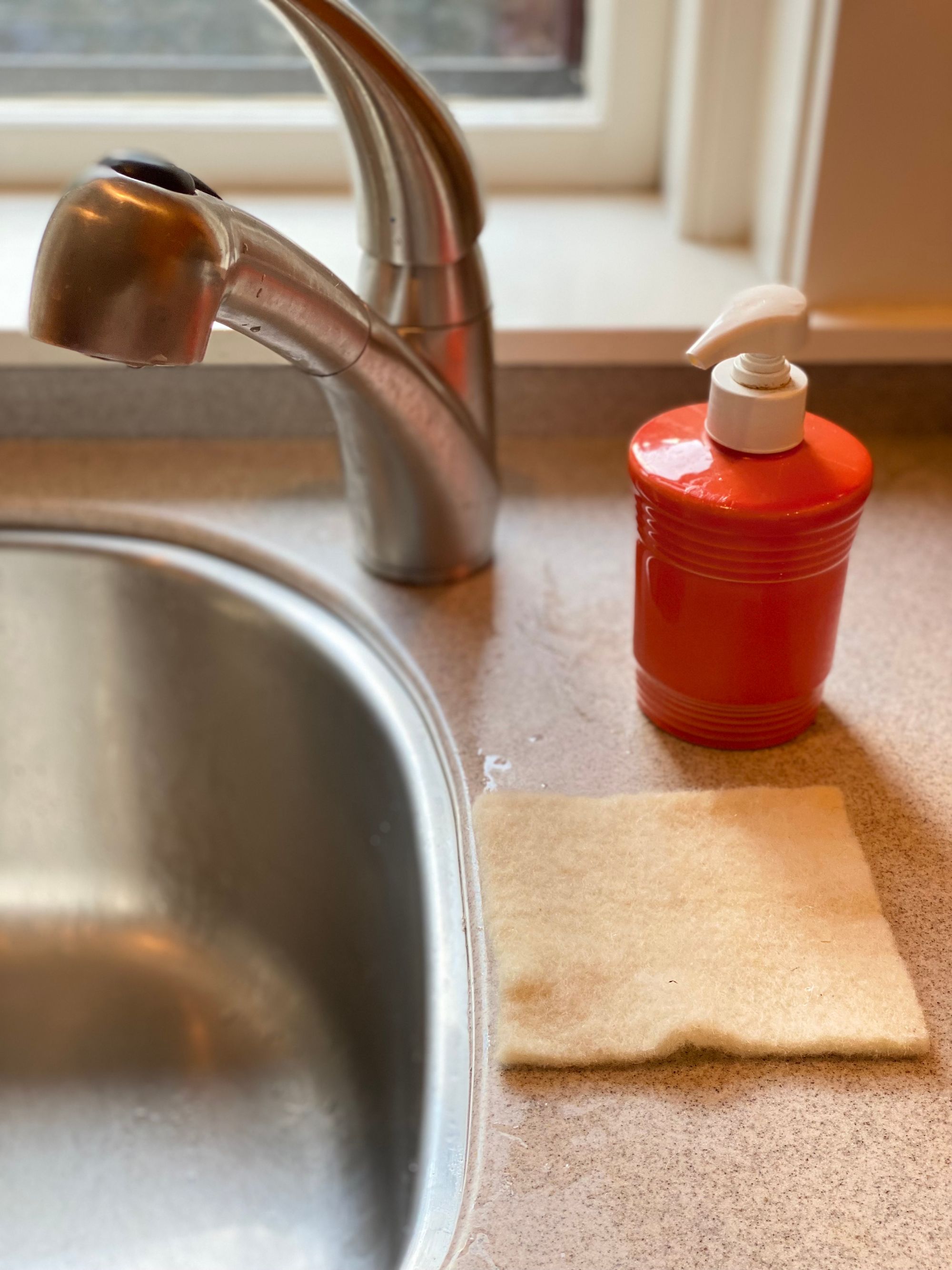
The experience was extremely pleasant. The wool does a good job of providing a gentle abrasive surface for soapy water. The fibers clung to my hands while I was holding the sponge, but they didn't actually come off—not on my hands, not on the dishes, not in the water. Everything stayed put.
The packaging also gives you permission to use this as a sponge for your body instead, if scrubbing tomato sauce or chocolate cake batter with a pristine sheet of wool is just too much for you to take.

While I won't be using this to scrub a lasagne pan any time soon, I am putting it in circulation next to my trusty green and yellow 3M plastic sponge (which is now on notice). I'll still need something else for scrubbing. But if the wool sponge stays sweet and fresh instead of gradually becoming dirtier than my dishes... I know what everyone is getting for Christmas this year.
